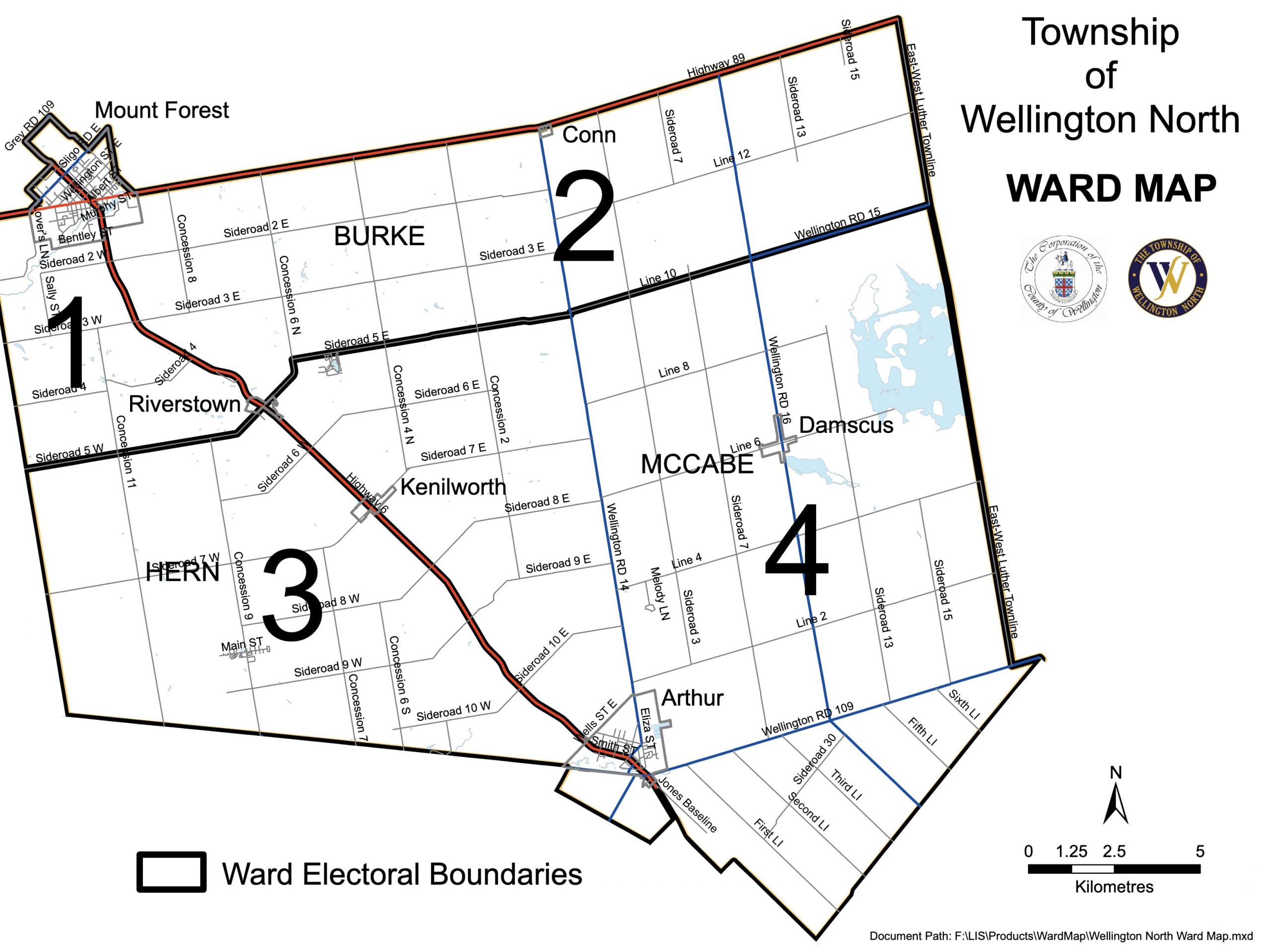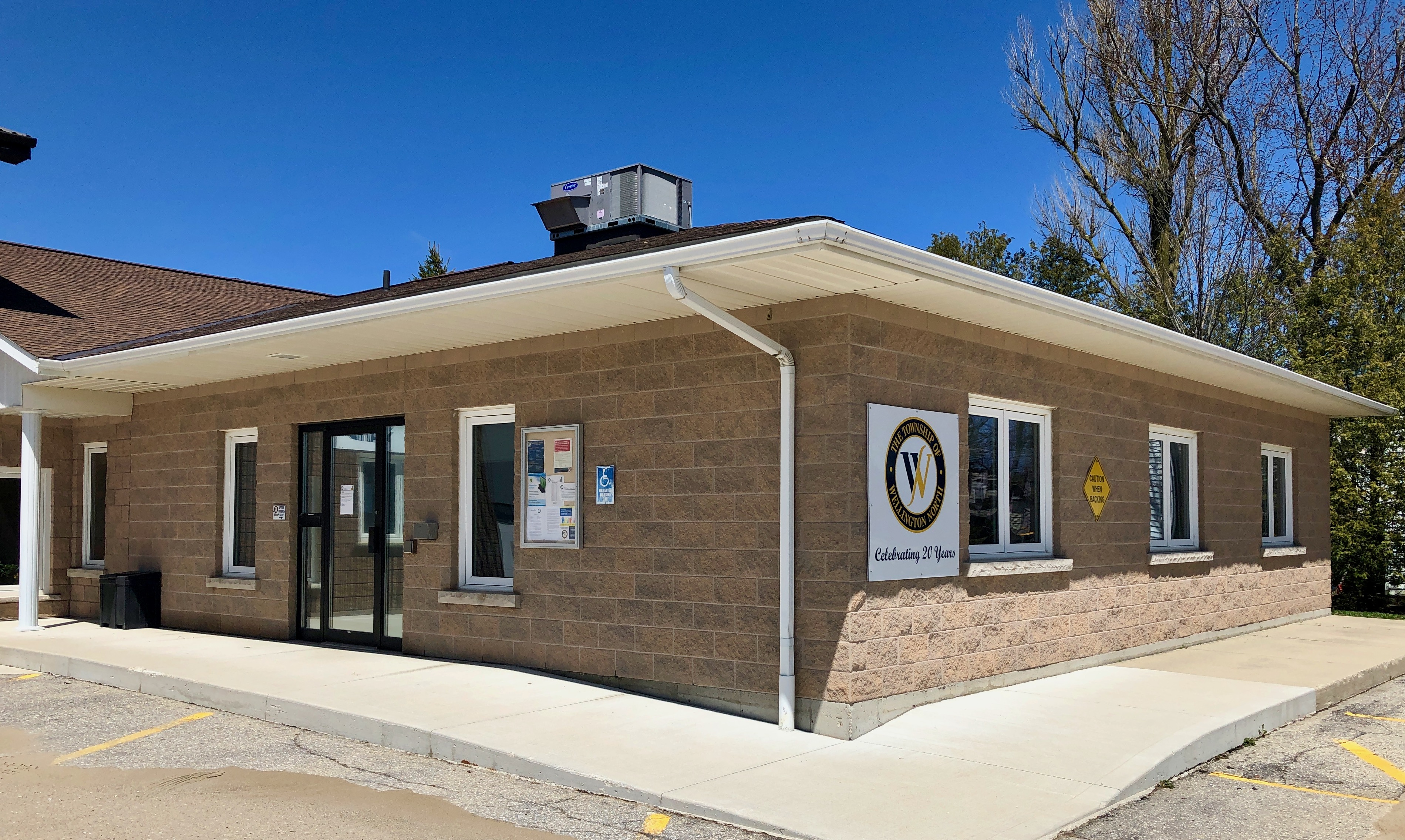KENILWORTH – Is it worth spending $60,000 of public money on a ward boundary study, council pondered last week, only for things to stay the way they are?
Wellington North council began discussing in May how the township’s growing population may spur a shift in electoral ward boundaries.
A report at the time from clerk Karren Wallace looked at how the township could delineate ward boundaries to reflect a fairer distribution of electors.
With Ward 3 containing a smaller proportion of the township’s overall population, and taking into consideration future growth, Wallace suggested that by 2030, boundaries for Wards 3 and 4 would require adjustments.
A change to wards, Wallace explained in the report, involves studying representation levels, where boundaries should be redrawn, and how county wards would be affected.
Rather than make any definitive decisions, council asked Wallace to report back to council with a look at the options.
On July 10, Wallace included two recommendations:
- reduce the number of wards from four to two, with two elected representatives per ward based on an east-west boundary divided by Highway 6; or
- switch to an at-large system with councillors unconfined by ward boundaries.
At-large electoral systems are presently used in the Wellington municipalities of Minto, Mapleton, Erin and Puslinch.
Wallace wrote that population variances within wards plus/minus of 25 to 30 per cent are seen as acceptable.
Moving to two wards would achieve that threshold, Wallace wrote, noting wards hadn’t been reviewed since Arthur and Mount Forest amalgamated in 1999.
Regardless of council’s decision for a two-ward or at-large electoral system, Wallace advised a study be conducted to support the decision, pegging the cost at $60,000.
Ward 2 councillor Sherry Burke voiced support for the present four wards or moving to an at-large system. Burke previously said she heard from “a lot of folks” who wanted an at-large system rather than a “dated” ward system.
“We should be looking at the community as a whole, not just as our specific ward,” Burke said in May.
She also mentioned the idea of increasing the number of council seats.

Township of Wellington North image
At last week’s meeting, she suggested surveying the electorate, but Mayor Andy Lennox, who previously voiced support for two wards with two councillors each, said the onus should be on council to decide.
Burke said going to a different ward system would be “just as confusing … as the ward system that we have.”
The councillor also suggested that splitting wards east and west would keep the distribution of voters more or less the same as it is now, a point Wallace conceded was somewhat accurate.
“I just have a really hard time spending $60,000 to flip around a few residents, if we’re still going to have a ward system,” Burke said.
Councillor Penny Renken and Steve McCabe advocated for keeping the current system and opposed an at-large model. Councillor Lisa Hern was not present at the meeting.
Council also discussed options for merging wards, shifting wards, and even an at-large deputy mayor with ward councillors.
Ultimately, spending the cash on a study dissuaded the group.
Rather than settling on either of the two options provided in the clerk’s report, council instead voted to receive the report for information.
That meant no action was taken and as result, the wards remain the way they are.
Lennox, however, voted against receiving the report for information. He suggested ignoring a “very real” perception among residents of a north-south divide does a disservice to residents.
“I think to do nothing about it misses an opportunity to provide leadership in that regard,” the mayor said.




